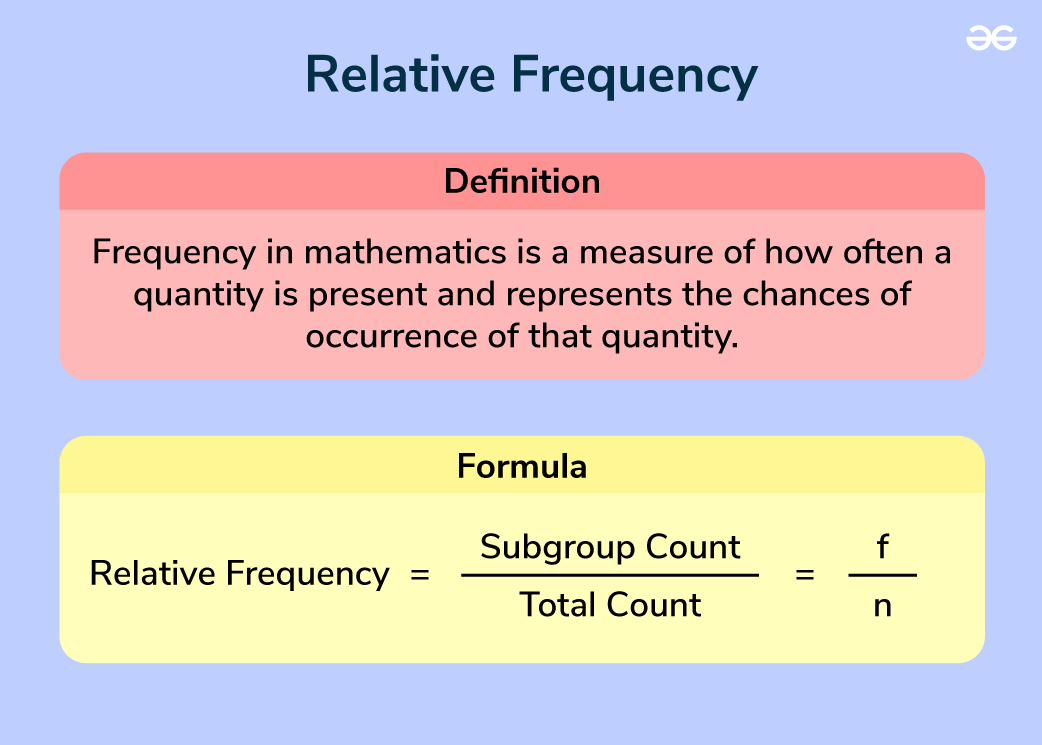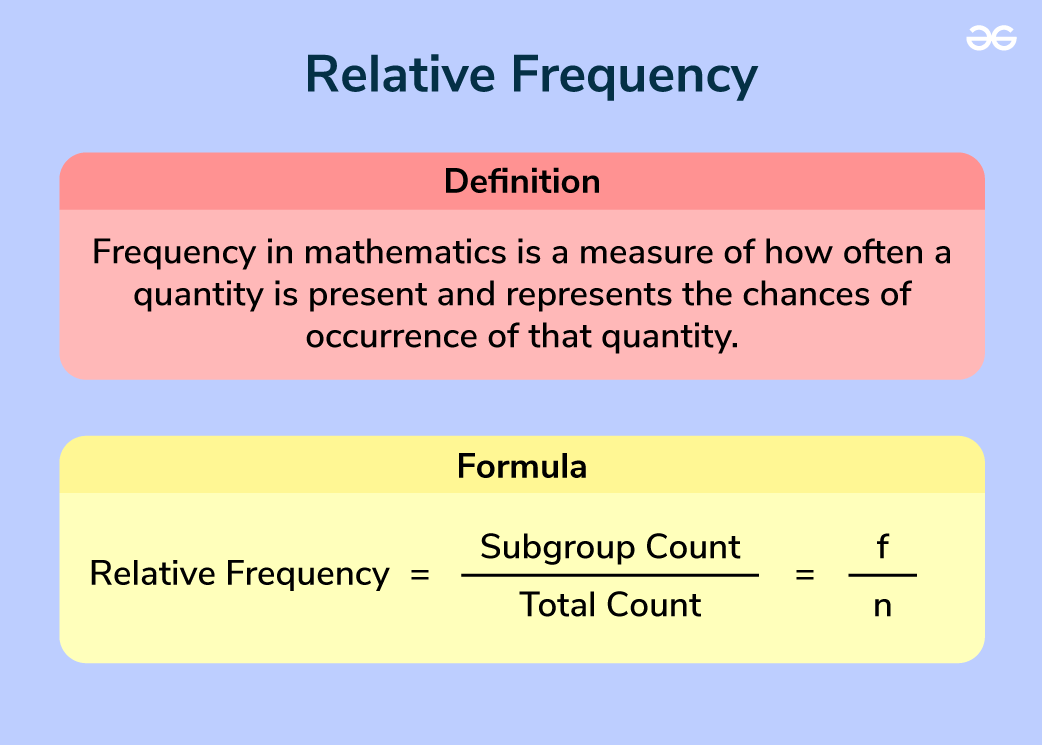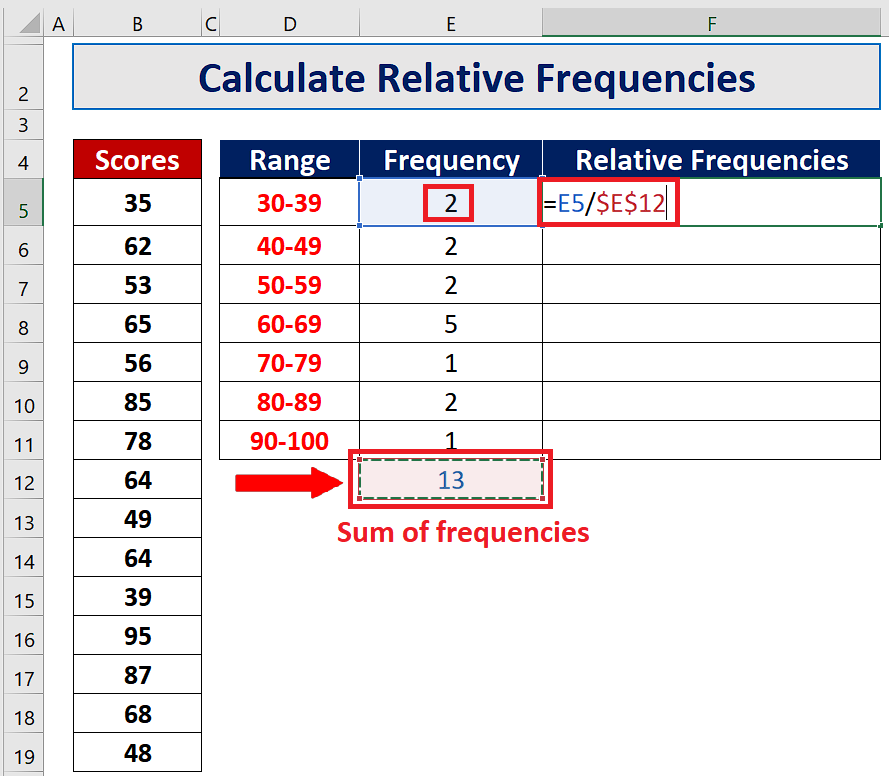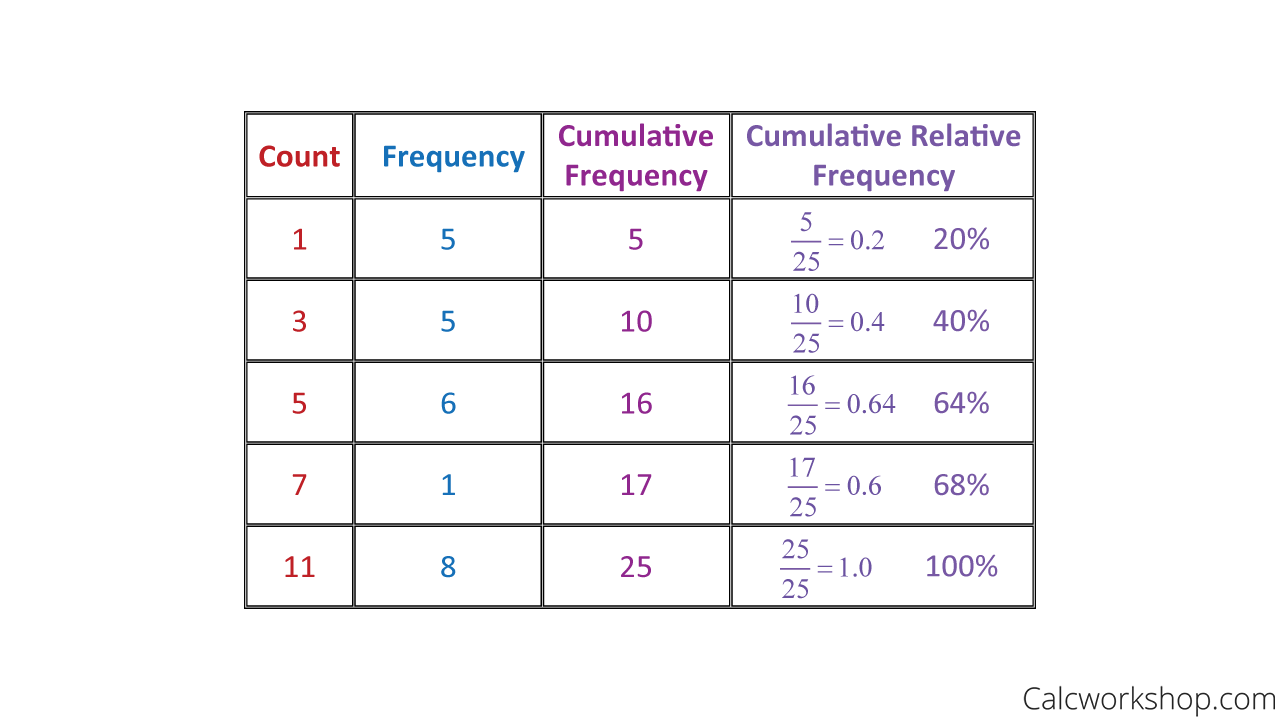How To Calculate Relative Frequency How to Calculate Relative Frequency The ratio of the number of times a value of the data occurs in the set of all outcomes to the number of all outcomes gives the value of relative frequency Let s understand the Relative Frequency formula with the help of an example
Our relative frequency calculator can help you find the experimental probability for ungrouped and grouped data as well as cumulative relative frequency The relative frequency formula says relative frequency f n where f is the frequency of a specific group and n is the total frequency Let us learn about the relative frequency formula with a few solved examples
How To Calculate Relative Frequency

How To Calculate Relative Frequency
https://helovesmath.com/wp-content/uploads/2024/10/Relative-Frequency-Formula-and-Definition.png

How To Calculate Relative Frequency Percent
https://i.ytimg.com/vi/kRzW6HzKc_E/maxresdefault.jpg

How To Calculate Relative Frequency Table
https://i.ytimg.com/vi/zPAdUkh7Vm8/maxresdefault.jpg
To calculate relative frequency we have to use the formula a Relative frequency total number of trials b Relative frequency number of times the event happens c Relative frequency Relative Frequency is the frequency of an observation concerning the total number of observations An object s relative frequency is calculated using the formula Relative frequency f n where f is the frequency of an observation and n
To calculate relative frequency you first need to have a clear and organized dataset Make sure that the data points are accurate properly categorized and free from any entry errors Step 2 Identifying Unique Outcomes Identify the unique outcomes or events present in your dataset To find the relative frequency divide the frequency f by the total number of data values n The formula for the relative frequency is given as f n f n What is the Difference Between Probability and Relative Frequency There is a major difference between relative frequency and probability
More picture related to How To Calculate Relative Frequency

How To Calculate Relative Frequency Frequency Distribution Table
https://i.ytimg.com/vi/6hJGa4Zp62M/maxresdefault.jpg

How To Calculate Relative Frequency
https://i.pinimg.com/originals/35/43/50/3543509b2d1004b6f30e02c78f505d79.png

How To Calculate Relative Frequency In Excel
https://www.statology.org/wp-content/uploads/2020/04/relFreqExcel6-1024x796.png
Here s how to calculate relative frequencies Count the frequency of each value This involves counting how many times each unique value appears in the dataset Calculate the total number of observations This is simply the total number of values in the dataset To calculate the relative frequency of a specific category you need to divide the frequency of that category by the total number of observations and multiply it by 100 to express it as a percentage The formula for calculating relative frequency is Relative Frequency Frequency of the Category Total Number of Observations x 100
[desc-10] [desc-11]

How To Calculate Relative Frequency In Excel
https://www.statology.org/wp-content/uploads/2020/04/relFreqExcel2.png

How To Calculate Relative Frequency In Excel
https://www.statology.org/wp-content/uploads/2020/04/relFreqExcel5.png

https://byjus.com › maths › relative-frequency
How to Calculate Relative Frequency The ratio of the number of times a value of the data occurs in the set of all outcomes to the number of all outcomes gives the value of relative frequency Let s understand the Relative Frequency formula with the help of an example

https://www.omnicalculator.com › statistics › relative-frequency
Our relative frequency calculator can help you find the experimental probability for ungrouped and grouped data as well as cumulative relative frequency

How To Calculate Relative Frequency In Excel

How To Calculate Relative Frequency In Excel

Relative Frequency

How To Calculate Relative Frequencies In Excel SpreadCheaters

How To Calculate Relative Frequencies

Relative Frequency Table

Relative Frequency Table

Relative Frequency Table

How To Find A Frequency

Calculating The Relative Frequency
How To Calculate Relative Frequency - To calculate relative frequency you first need to have a clear and organized dataset Make sure that the data points are accurate properly categorized and free from any entry errors Step 2 Identifying Unique Outcomes Identify the unique outcomes or events present in your dataset